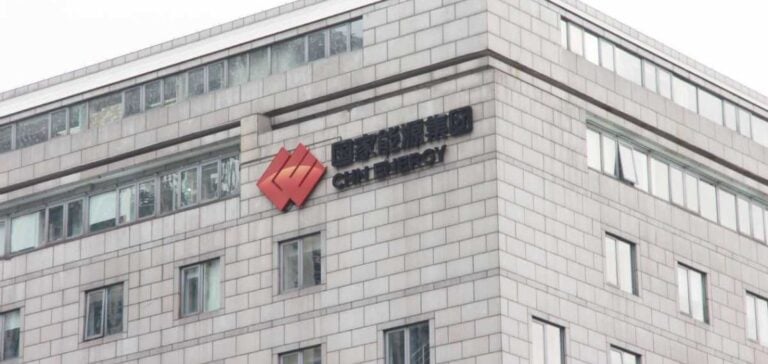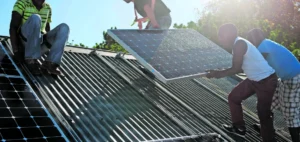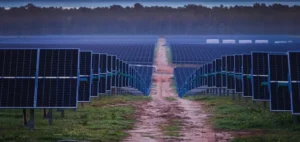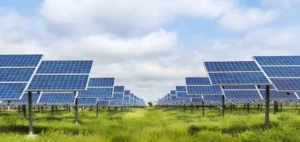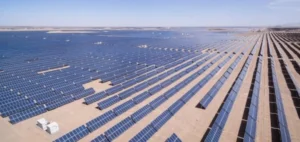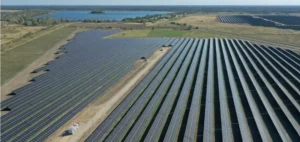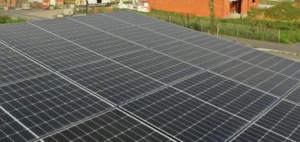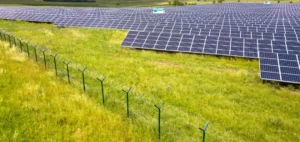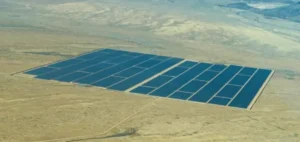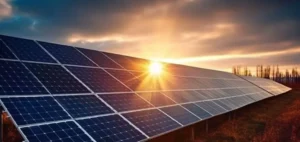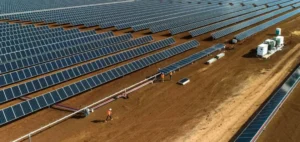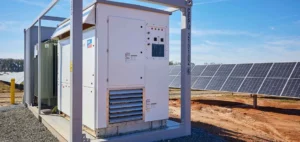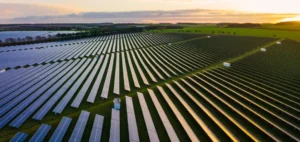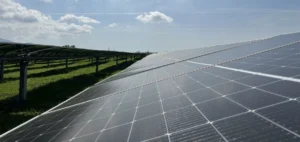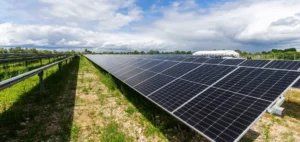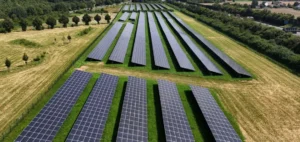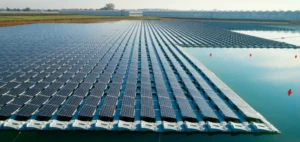Located in the Shandong province off the coast of Dongying city, China’s first floating offshore solar park with fixed steel foundations was inaugurated by CHN Energy, a leading state-owned enterprise in the energy sector. This project, with an installed capacity of 1 gigawatt (GW), represents a major milestone in the country’s energy transition efforts.
The park is expected to produce an annual output of 1.78 billion kilowatt-hours (kWh), saving an estimated 594,500 tons of standard coal. In terms of environmental impact, this reduction corresponds to avoiding the emission of 1.441 million tons of carbon dioxide (CO₂) annually. The project aligns with China’s strategic goal of diversifying its energy sources while advancing its ecological transition.
A key technological innovation for offshore solar
The use of fixed steel foundations is a crucial feature of this project. These structures, designed to withstand complex marine conditions, represent a significant technological breakthrough in offshore solar installations. This technology ensures greater durability and improved efficiency in solar energy production at sea.
Furthermore, this project highlights China’s advancements in renewable energy. With a capacity of 1 GW, the park positions the country as a global leader in innovative energy solutions, demonstrating its ability to integrate clean energy into challenging maritime environments.
Synergies between aquaculture and solar energy
The initiative goes beyond electricity generation. The solar park is also designed to integrate with aquaculture activities, generating additional annual revenues estimated at 27 million yuan. This multifunctional approach emphasizes the optimal use of maritime spaces, combining energy production with sustainable marine resource exploitation.
This model of aquaculture-energy integration showcases an innovative strategy aimed at maximizing the economic and ecological benefits of offshore energy infrastructures. Through this project, CHN Energy demonstrates how industrial synergies can support sustainable and profitable development in the long term.
A strategic project for China’s energy transition
The Dongying floating offshore solar park reflects China’s commitment to diversifying its energy portfolio. Adopting large-scale solar solutions, especially in marine areas, reduces dependence on fossil fuels while contributing to the country’s national climate goals.
This project also strengthens China’s position as a global leader in renewable energy. By integrating technological innovation and sustainable practices, CHN Energy sets an important milestone for the future development of offshore solar infrastructures worldwide.

